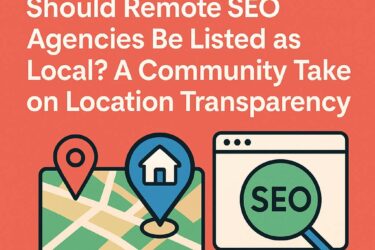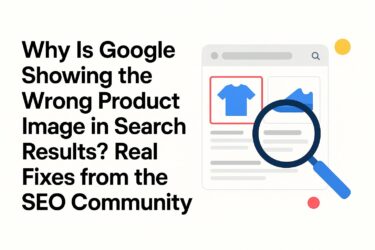You log into GA4. You see a page with great traffic… but a bounce rate that makes your coffee go cold. Frustrating, right? You’ve done the hard part—getting visitors to land on your page. But if they’re bouncing before they even read your first subheading, something’s up.
Here’s the thing: Google notices. And when people bounce, search engines assume your page didn’t meet their needs. That’s bad news for rankings. It’s also a clear signal that your SEO strategy might be ignoring the most important factor of all: user behaviour.
Let’s dig into what’s really going on—and how to fix it.
Why High Bounce Rates Hurt SEO
In 2025, SEO isn’t just about keywords and crawlability. It’s about whether users find your site helpful, fast, and engaging. Bounce rate, time on page, scroll depth—these are all signs of how users interact with your content. And yes, Google’s paying attention.
If someone visits your page and hits the back button instantly, it suggests that your content didn’t match their intent—or worse, that your page was too slow or hard to read. Multiply that over hundreds of users, and suddenly your high bounce rate becomes an SEO liability.
The result? Rankings drop. Traffic drops. Conversions follow.
What Your Analytics Is Telling You (That You’re Ignoring)
Your analytics data is full of clues. Here’s what to look at:
- Bounce Rate & Engagement Rate: A high bounce rate could mean users aren’t finding what they expected. Engagement rate (in GA4) offers a better view of whether people interact at all.
- Time on Page: Are they staying long enough to read?
- Exit Pages: Which pages are pushing people away?
- Traffic Sources: Is your PPC campaign landing people on pages that don’t convert?
- Device Breakdown: Is mobile UX ruining the experience?
These numbers aren’t just stats—they’re user stories. And if you’re not reading them properly, you’re missing the opportunity to course-correct.
Common Reasons Pages Bounce (and How to Fix Them)
Let’s walk through a few usual suspects:
1. Slow Page Load Times No one’s sticking around for a site that takes 5+ seconds to load. Compress images, eliminate render-blocking scripts, and optimise for mobile.
2. Poor Content Structure If your content is a wall of text, visitors will bounce before they scroll. Break it up with subheadings, bullet points, and visuals that guide the eye.
3. Mismatched Search Intent If your page ranks for “how to fix a leaky tap” but opens with a 500-word company history, users will bail. Get to the point—and fast.
4. Aggressive Pop-Ups or Ads Annoying overlays kill trust and experience. Use them sparingly, or better yet, A/B test placements and timings.
5. Weak Meta Titles and Descriptions If your SERP snippet doesn’t match what’s on the page, users feel misled. That’s an instant bounce. Make sure your metadata reflects the content accurately.
6. Confusing Design or Navigation If users can’t figure out what to do or where to go next, they’ll leave. Clear CTAs, logical menus, and intuitive design reduce confusion.
7. Thin or Outdated Content Old blog posts and light pages that lack substance will turn users away. Refresh outdated content and add more value.
How to Reduce Bounce and Increase Engagement (Without Guesswork)
Now that we know what’s going wrong, let’s talk fixes. Here’s how to stop the bounce in its tracks:
1. Optimise for User Intent Make sure each page matches the intent of the keyword it targets. Informational searches need quick answers and clear takeaways. Commercial ones need trust signals and clear CTAs.
2. Make Content Scannable Use short paragraphs, meaningful headers, and clear formatting. Design for skim-readers, not just deep readers.
3. Improve Page Speed and Core Web Vitals Run regular speed tests and fix technical issues. A fast site keeps users engaged—and helps rankings too.
4. Add Internal Links That Guide the Journey Use strategic internal linking to keep users moving deeper into the site. Think like a tour guide.
5. Rework Top Exit Pages If certain pages are bleeding traffic, audit them closely. Where are people losing interest? What’s missing?
6. Include Interaction Points CTAs, calculators, videos, comment boxes—these all invite users to do more than just read. And that interaction tells Google your page is valuable.
Behaviour-Driven SEO: The Smart Way Forward
It’s tempting to view SEO through a purely technical lens—but real success in 2025 means combining technical audits with human behaviour insight.
When you treat your analytics as a conversation with your audience, everything changes. You stop optimising just for rankings and start building better experiences. And better experiences lead to:
- Longer time on site
- Lower bounce rates
- Higher conversions
- Better rankings
It’s a feedback loop worth investing in.
Conclusion: Bounce Isn’t Just a Metric—It’s a Message
High bounce pages are your audience telling you, “this didn’t work for me.” Instead of panicking or ignoring the data, use it. Learn from it. Adapt.
Fixing bounce rate isn’t about tricking users into staying. It’s about giving them a reason to. When your pages are fast, clear, relevant, and valuable, users stick around—and Google notices.
Need help turning high-bounce pages into high-performing ones?
At Algo Digital, we blend behavioural insight with technical SEO to get results that stick. If you’re tired of seeing great traffic go to waste, get in touch. We’ll help you make sense of the data—and build pages your users (and search engines) love.


